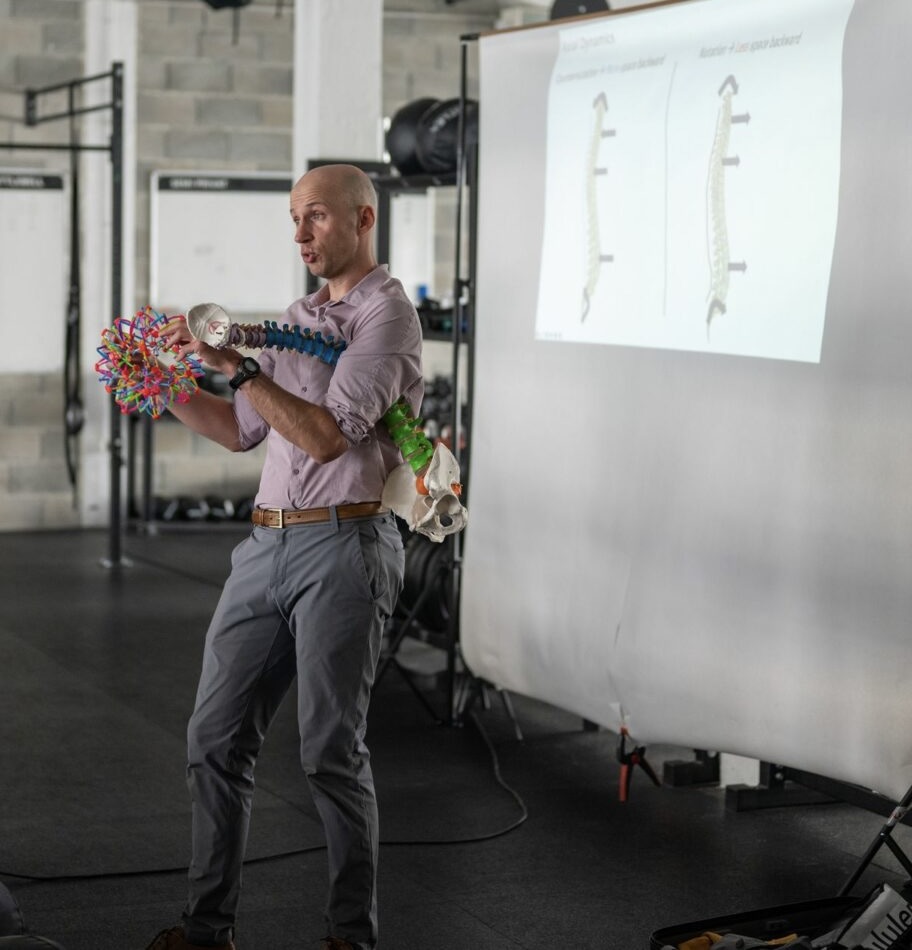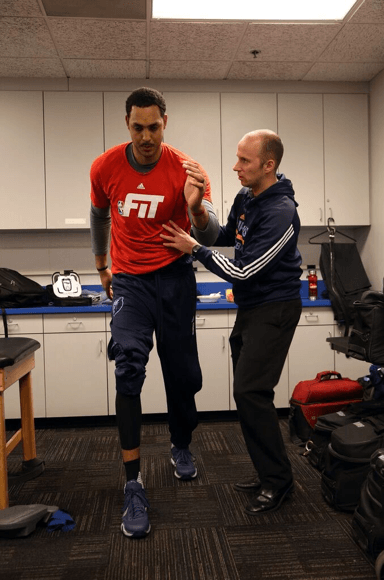You can’t have effective performance without addressing movement quality—it’s the foundation of everything you do.
Zac Cupples
What You will learn
- The Importance of Fluid Dynamics and Pressure in Movement: Zac explains how understanding fluid dynamics and pressure within the body can improve movement efficiency, reduce injury risk, and enhance athletic performance.
- How to Optimize Movement for Performance: learn practical strategies for improving movement by focusing on key concepts like mobility, stability, and joint range of motion. Zac breaks down complex biomechanical ideas into simple, actionable tips for both athletes and therapists to improve performance.
- The Role of Physics in Physical Therapy and Sports Training: The episode emphasizes the critical role that physics—such as force, velocity, and rotation—plays in shaping how the body moves. Zac illustrates how applying these principles can lead to better movement, faster recovery, and higher levels of performance in sport and everyday life.
Mastering Movement and Performance with Zac Cupples: Key Takeaways from the Finding Small Wins Podcast
In the latest episode of The Finding Small Wins Podcast, I had the privilege of sitting down with movement expert and physical therapist Zac Cupples. Known for his unique ability to break down complex biomechanical concepts into simple, actionable steps, Zac’s insights on movement and performance are a must-listen for anyone looking to elevate their approach to fitness, therapy, or sports training. In this episode, we dove deep into the science behind movement, explored how to optimize performance, and discussed the exciting future of movement assessment with technology.
Here’s a quick overview of the top three lessons you can take away from this conversation more info about Zac:
Zac’s Human Matrix continuing education seminar
Understanding Fluid Dynamics and Pressure in Movement
One of the standout concepts Zac discussed was the role of fluid dynamics and pressure in human movement. While these ideas may seem abstract, Zac breaks them down in a way that makes sense for both therapists and athletes. The human body is a fluid-based system, and how we apply pressure—whether through movement or breath—affects our ability to generate force and move efficiently.
Zac uses simple analogies like stress balls and breathwork to demonstrate how the body redistributes pressure to create movement. By understanding and controlling these forces, athletes and therapists alike can help unlock new levels of performance, reduce injury risk, and move more efficiently in everyday life.
Your ability to move is limited by your ability to manage pressure within your body.
Zac Cupples


Applying Physics to Optimize Performance
Zac also highlights the critical role of physics—specifically concepts like force, velocity, and rotation—in shaping how we move. Every movement we perform, whether it’s on the sports field or in daily life, involves some form of rotation. Yet, as Zac points out, this rotational aspect of movement is often overlooked in traditional physical therapy and training programs.
By understanding how physics influences movement, we can start to tailor our exercises, stretches, and rehab protocols more effectively. For example, improving joint range of motion and applying the right forces at the right angles can dramatically improve how we perform and recover from activity.
Zac explains how mastering these fundamental principles of physics can help athletes reach higher levels of performance and keep their bodies moving efficiently for longer.
Movement is more than just motion—it’s about understanding how to apply force and pressure to unlock performance
Zac Cupples
The Future of Movement Assessment: Technology and AI
One of the most exciting topics in our conversation was the potential for artificial intelligence (AI) and modern technology to revolutionize how we assess movement. Zac sees a future where AI can help therapists and trainers pick up on subtle movement inefficiencies that the human eye might miss. Not only that, but these tools can also help remove bias from the assessment process, leading to more accurate evaluations and better outcomes for patients and athletes alike.
While this technology is still in its early stages, Zac’s optimism about the future of movement assessment is contagious. By combining cutting-edge tech with a deep understanding of biomechanics, therapists and trainers will be able to deliver even better results in the years to come.
Movement isn’t about isolated exercises—it’s about how everything in your body works together as a system.
Zac Cupples
Listen here – Finding Small Wins Podcast:
Zac Cupples: Movement and Mechanics: Simplifying Complex Concepts
10 Key Takeaways
- Understanding Fluid Dynamics in Movement
Movement is greatly influenced by how pressure and fluid are distributed throughout the body. Controlling these forces can enhance performance and reduce injury risk. - Rotation is a Key Component of All Movements
Every movement, whether it’s running, lifting, or stretching, involves some degree of rotation. Recognizing this is critical for improving movement efficiency and preventing injury. - The Role of Physics in Physical Therapy
Concepts like force, velocity, and acceleration play a vital role in human movement. By applying these physics principles, athletes and therapists can optimize performance and recovery. - Mastering the Basics of Movement is Crucial
While many focus on collecting tools and techniques, Zac emphasizes the importance of mastering foundational movement principles before applying complex strategies. - Movement Assessments Should Focus on Individual Needs
Movement quality and posture are unique to each individual. The goal should be to optimize a person’s range of motion and strength based on their specific build and needs. - Breathing and Pressure Control Affect Movement
Breathing directly impacts movement by affecting pressure dynamics within the body. Proper breathing can help unlock mobility and improve overall movement patterns. - Improving Joint Range of Motion Enhances Performance
A broader range of motion across multiple joints helps distribute load and movement, reducing the risk of injury while enhancing performance. - Small Adjustments Can Lead to Big Changes
Minor tweaks in movement patterns and posture can have a significant impact on performance. Zac emphasizes the value of small, consistent changes over time. - The Future of Movement Assessments with AI
AI has the potential to revolutionize movement assessments by detecting subtle inefficiencies and helping therapists and trainers remove biases from their evaluations. - Movement Strategies Should be Simple and Accessible
Zac advocates for simplicity in movement strategies, focusing on easy-to-execute solutions that athletes and everyday people can consistently apply.
episode timeline
00:00 Introduction and Background of Zac Cupples
04:45 The State of Continuing Education in Physical Therapy
10:55 Understanding Movement: The Matrix Approach
17:57 The Role of Physics in Movement
24:52 Fluid Dynamics, Pressure, and Breathwork
34:04 Stratifying Movement: Archetypes and Structural Differences
38:55 Movement Interventions in High Performance
44:00 The Impact of AI on Movement Assessment
49:09 Cultural Influences on Movement Practices
55:55 Advice for Improving Movement and Posture



